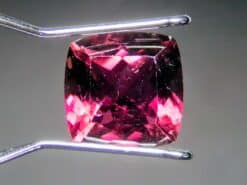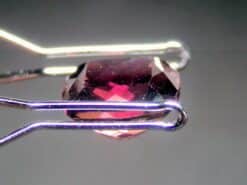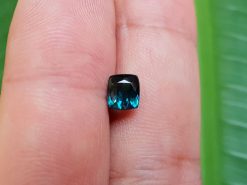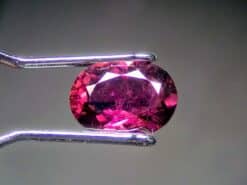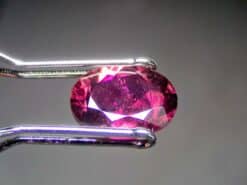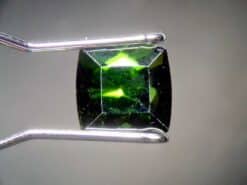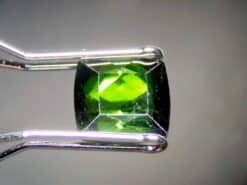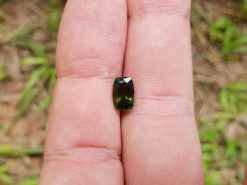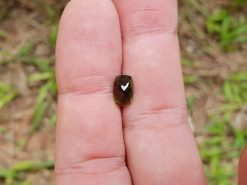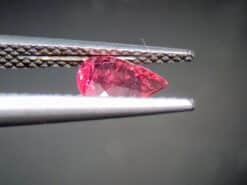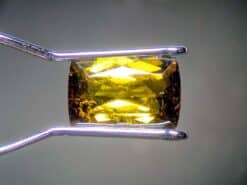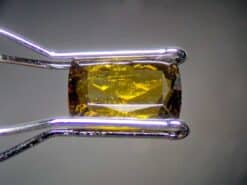Color change chrome tourmaline
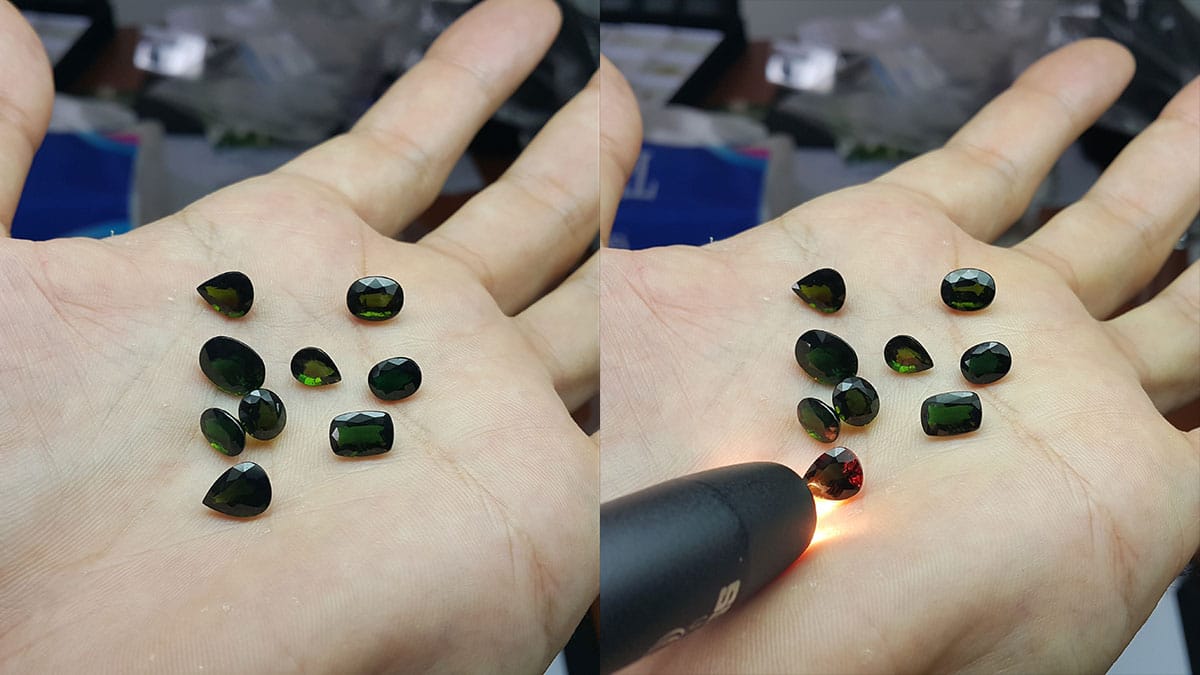
Buy natural tourmaline in our shop
Introduction to Color change chrome tourmaline
Tourmaline is a crystalline boron silicate mineral compounded with elements such as aluminium, iron, magnesium, sodium, lithium, or potassium. This remarkable gemstone is classified as a semi-precious stone and comes in a wide variety of colors. Each piece of tourmaline can exhibit unique features depending on its specific chemical composition, making it highly prized among collectors and jewelry enthusiasts.
Etymology of tourmaline
According to the Madras Tamil Lexion, the name “tourmaline” comes from the Sinhalese word “Thoramalli”, which refers to a group of gemstones found in Sri Lanka. The Madras Tamil Lexicon also indicates that the Tamil “tuvara-malli” and “Toramalli” are similarly derived from this Sinhalese root word. This etymology is supported by several respected dictionaries, including the Oxford Dictionary.
Sri Lankan tourmalines in Europe
Brightly colored Sri Lankan gem tourmalines were brought to Europe in great quantities by the Dutch East India Company to satisfy demand for both curious mineral specimens and exquisite gemstones. At the time, it was not realized that schorl and tourmaline were the same mineral—this distinction only became apparent around 1703, when certain colored gems previously believed to be zircons were correctly identified as tourmalines.
Historical use and pyroelectric properties
In earlier times, tourmaline was sometimes referred to as the “Ceylonese (Sri Lankan) Magnet” because of its pyroelectric properties, which enable it to attract and repel hot ashes when heated. During the 19th century, chemists took advantage of these pyroelectric and pleochroic characteristics, using polished tourmaline crystals to polarize light for scientific experiments.
Color change tourmaline
Color change is one of the rarer and more intriguing optical phenomena in gemstones. Unlike pleochroism—where color may vary depending on the viewing angle—this phenomenon relies on the type of light source. Specifically, certain gems appear differently under daylight or incandescent lighting. Color change tourmaline is among those rare stones capable of shifting color due to the wavelengths of light that the stone absorbs and transmits.
A gemstone that appears red under one type of light does so because it absorbs all frequencies of light except for red. In a color change specimen, the material absorbs all frequencies except, for instance, blue and red; thus, it may appear blue when exposed to blue-rich daylight and exhibit red tones under warm, red-rich lighting such as incandescent bulbs.
Although alexandrite is often regarded as the most famous color change gemstone, this phenomenon can also occur in unusual instances of sapphire, garnet, diaspore-zultanite, and especially certain types of tourmaline. This ability to shift in hue significantly increases a stone’s rarity and makes such tourmalines highly sought after among gem collectors.
Color change chrome tourmaline
Characteristics and rarity of color change chrome tourmaline
Color change chrome tourmaline is particularly notable because it incorporates traces of chromium, the same element responsible for the striking green hue in other gems when viewed in daylight. This chromium content can also yield different colors under incandescent or artificial lighting, giving rise to the mesmerizing color change effect. Due to the complex geological conditions required for formation, stones displaying a distinct color shift are exceedingly rare.
In addition to its captivating color shifts, color change chrome tourmaline often exhibits excellent transparency and clarity. Many specimens can be faceted into brilliant shapes, highlighting the stone’s ability to refract and reflect light. Quality faceting further accentuates the color change phenomenon, enhancing the gem’s beauty and value.
Evaluating color change intensity
The intensity of color change in tourmaline can vary significantly from one stone to another. Collectors and gemologists often evaluate a stone by observing it under different light sources, such as natural daylight and incandescent lighting. The strength of the color shift, along with the clarity and cut, helps determine the stone’s overall desirability and market value. As such, color change chrome tourmaline with a pronounced shift is often considered especially valuable.
Care and maintenance
While tourmaline is generally a durable gemstone, color change specimens still require appropriate care to maintain their luster and optical properties. Avoid exposing these gems to harsh chemicals or extreme heat, and clean them with warm soapy water and a soft brush. Regular inspection of any tourmaline jewelry setting is recommended to ensure the stone remains securely in place.
FAQ
What causes the color change effect in chrome tourmaline?
Color change in chrome tourmaline is primarily caused by the presence of chromium and the unique way the gem absorbs and transmits light. Different light sources have distinct wavelength balances, so the stone may shift from one color to another depending on the lighting environment.
How rare is color change chrome tourmaline?
Color change chrome tourmaline is quite rare compared to other tourmaline varieties. Because color change depends on specific trace elements and precise geological conditions, stones that display a pronounced shift are highly sought after by collectors.
Does the intensity of the color change vary from one stone to another?
Yes, the strength of the color shift can vary widely. Some stones display a dramatic transformation under different lighting conditions, while others exhibit a subtler change. The more striking the shift, the more valuable the tourmaline typically becomes.
How should I clean and care for color change chrome tourmaline jewelry?
Use mild soapy water and a soft brush to clean the stone. Avoid harsh chemicals or exposing the gemstone to extreme heat. Regularly check the setting of your tourmaline jewelry to ensure it remains securely in place.
Can color change chrome tourmaline be used for everyday wear?
Yes. Tourmaline is known for its relatively good hardness and durability, making it suitable for everyday wear if properly cared for. However, it is always a good idea to avoid heavy impact or harsh chemical exposure to keep the stone looking its best.
Natural tourmaline for sale in our gem shop
We make custom-made tourmaline jewelry such as engagement rings, necklaces, stud earrings, bracelets, and pendants. Please contact us for a quote.

